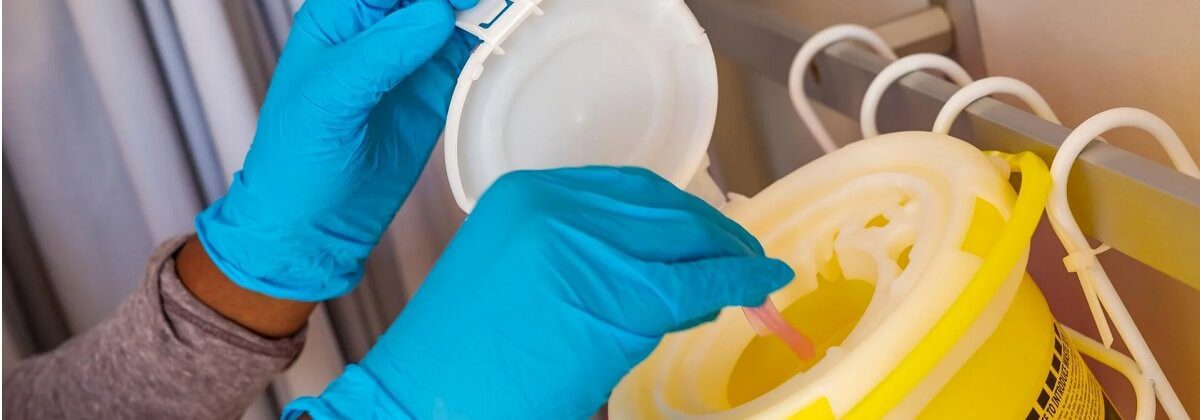Healthcare employers must provide relevant workers with appropriate information and training in Sharps Safety.
Sharps is defined as “objects or instruments necessary for the exercise of specific healthcare activities, which are able to cut, prick or cause injury or infection.” This includes equipment such as needles, blades (such as scalpels) and other sharp medical instruments.
Sharps Risk Assessment
Healthcare employers must carry out a sharps risk assessment and must, for the purposes of identifying how a risk of exposure can be eliminated and identifying alternative systems that may eliminate or reduce the risk of exposure to a minimum, take account of:
- The available technology that eliminates or reduces the risk of exposure
- How work is organised in the place of work
- Working conditions
- The influence of factors related to the working environment
- The level of qualifications of relevant workers
Risk elimination: so far as is reasonably practicable: sharps use and disposal
Healthcare employers must, where the results of a sharps risk assessment reveal a risk of exposure to a relevant worker, eliminate that risk “in so far as it is reasonably practicable” by:
- Specifying and implementing safe procedures for using and disposing of sharps and disposing of contaminated waste
- Eliminating the unnecessary use of sharps by implementing changes in practice on the basis of that assessment
- Providing medical devices incorporating safety-engineered sharps protection mechanisms, where those mechanisms are available and appropriate
- Banning the practice of recapping of needles, subject to the exception that recapping of needles is permitted where the needles have safety and protection mechanisms and do not pose a risk of injury
Risk reduction: to as low a level as necessary
Healthcare employers must also, having regard to the activity and a sharps risk assessment, reduce the risk of exposure to “as low a level as necessary” to adequately protect the health and safety of a relevant worker, by:
- For the disposal of sharps, placing a notice of the procedures for disposal and clearly marked and technically safe containers for that disposal as close as possible to the area where the sharps are used or found
Preventing the risk of infection by implementing safe systems of work by:
- Developing a coherent overall prevention policy, which covers the five matters required for the sharps risk assessment listed above
- Providing training to relevant workers
- Conducting health surveillance in compliance with section 22 of the 2005 Act and Regulation 12 of the Biological Agents Regulations 2013
- Providing suitable personal protective equipment for use by relevant workers
